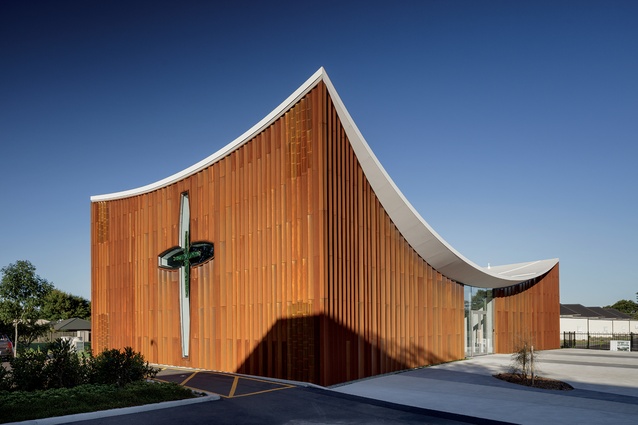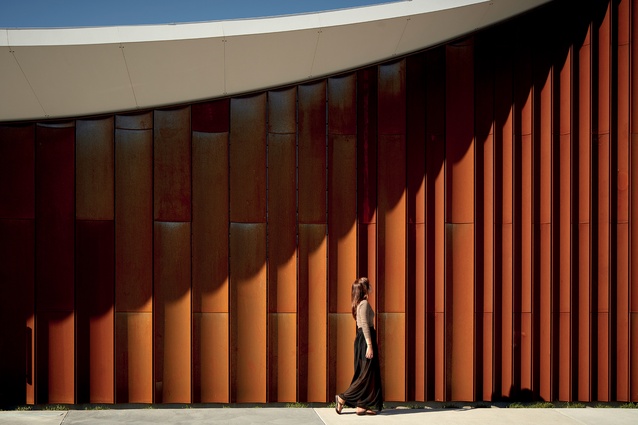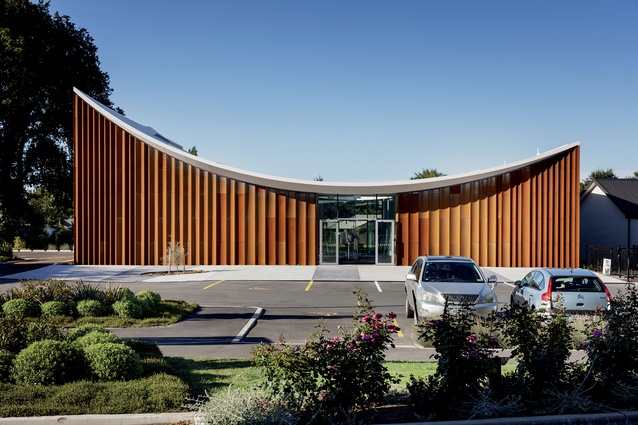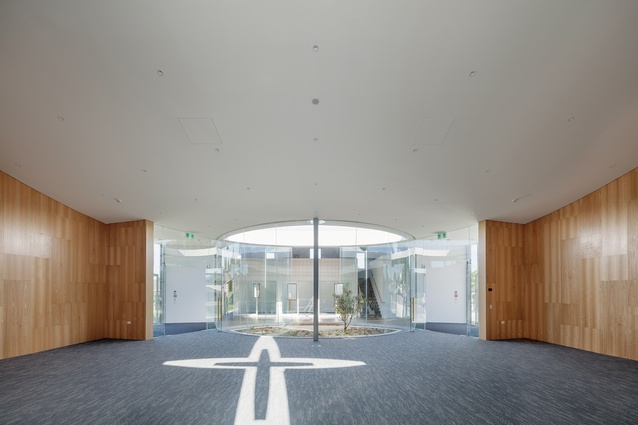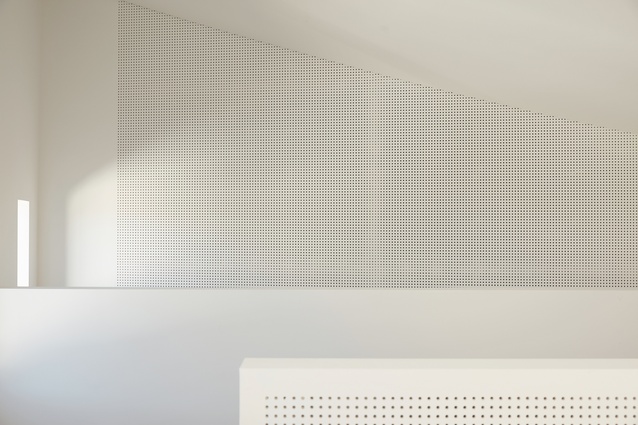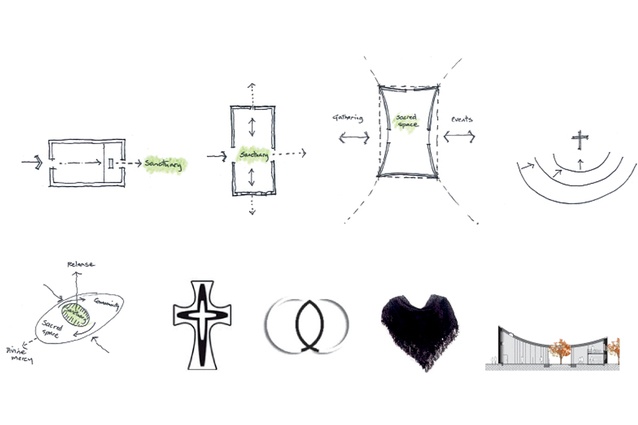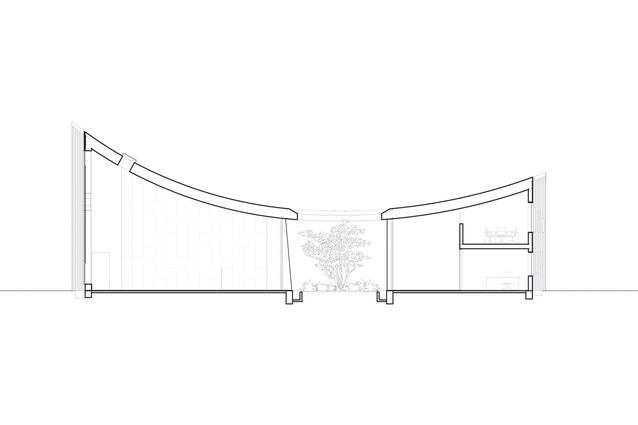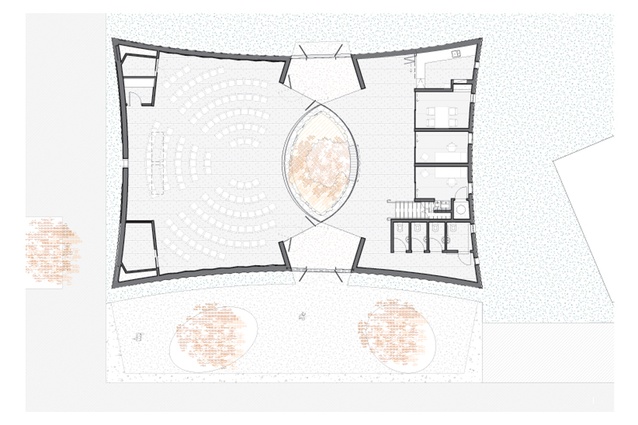Te Manawa Atawhai Catherine McAuley Centre
The geometries and curvatures of this chapel, designed by Hamish Shaw Architects for the Sisters of Mercy in Christchurch, speak to the many layers of religious and bicultural symbolism.
The New Zealand Sisters of Mercy originally arrived on the West Coast of the South Island in 1878, having been sent across the world from Ireland to share their teachings. Their founder, Catherine McAuley, was known for her black woollen shawl, in which she is said to have wrapped a newborn baby after its mother had died, and this became a symbol of the work of the Sisters.

The draping shawl and the ancient Greek symbol of the ichthys – the Christian fish – were used by Hamish Shaw Architects as strong design motifs when creating the chapel, which is located between Villa Maria College and Mercy House in Riccarton.
“We carried the geometry of the ichthys arc through from the big moves in the chapel down to the details. The central sacred garden, a place of contemplation, takes this form,” explains architect Hamish Shaw.” In history, this geometry is used to set up artworks – often Mary and Jesus are depicted in the form of an arc – and old cathedrals are set out this way too.”
Externally, the shape can be seen in the dramatic curvature of the roof and, again, in the individual curves of the panels of Corten used for the cladding. “The Corten creates a protective shell but it also references the industrial context of Christchurch,” says Shaw. This material is in intentional contrast with the central garden, which, when it grows out, will be lush with West Coast ferns, a reference to the Sisters’ beginnings in New Zealand. A native fuchsia tree was chosen for its attractiveness for the bellbird, which, it is hoped, will bring its sweet song into the space.
There is a sense of compression and release evident in the open view towards the sky from inside the entranceway of the building. This connects to Māori spirituality as well as to Catholic ideals, as the Sisters are known for the bicultural nature of their teachings, says Shaw.
“For Māoridom, it all starts with the earth, drawing attention to and recognising the value of the earth. The interior space is divided into two halves by the garden: the tapu, sacred worship space; and the noa, administration, side of the building. In terms of materiality, I wanted it to be simple and pared back. The key move was to show the division between the two halves, and for the third materiality to be the plants and nature.”
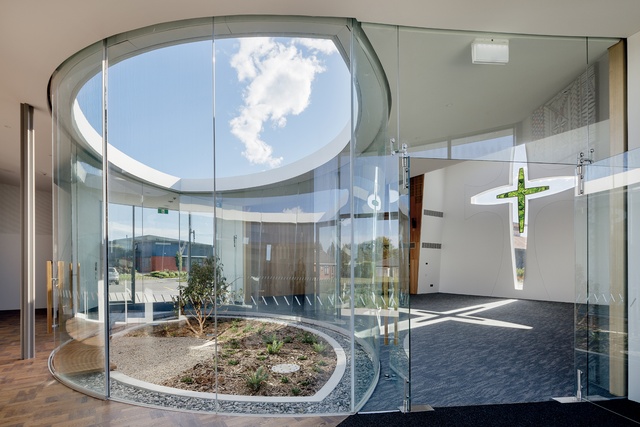
Timber walls and a carpet in Mercy blue define the worship side of the building while the other side, with its office spaces, mezzanine museum area and servery, are dressed in white with a timber floor.
The design of the cross is a further example of the merging of the two spiritualties. The shape follows the Mercy pattern of a cross within a cross while the use of pounamu references the idea of the Earth Mother, Papatūānuku, reaching towards the Sky Father, Ranginui. Again, this material references the West Coast, where the stone is prevalent.
The pounamu was gifted to the project in the form of a large rock, which was cut into stone slips by Ngāi Tahu carvers. It is framed in brass and anchored onto 15mm-thick glass, strengthened to handle the weight of the stone.
The structure is supported by a hidden steel framework, which also takes the wind load on the wall and is integral to the requirements for earthquake standards. This is just one example of the level of complex detail behind the scenes of what might appear to be a simple, curvy structure.

“The hardest parts were where the curves met curves,” says Shaw, who looked to Le Corbusier’s Notre Dame du Haut chapel in Ronchamp, France, for the shape of the roof. Creating this form was particularly challenging, especially when combined with the curvature of the Corten.
“The pressed cladding is planted and fixed and, when it gets to the flashings, they are custom welded,” says Shaw. “The battens on the roof direct water evenly into the courtyard – it spills like a curtain and is quite mesmerising to watch on a rainy day.”
The building was completed within a tight budget of just $2.5 million, and its execution, with its equal measures of complexity and boldness, is an achievement in itself. When combined with its deceptively simple beauty, the chapel becomes a landmark piece of architecture that will be recognised and appreciated for many years to come.

